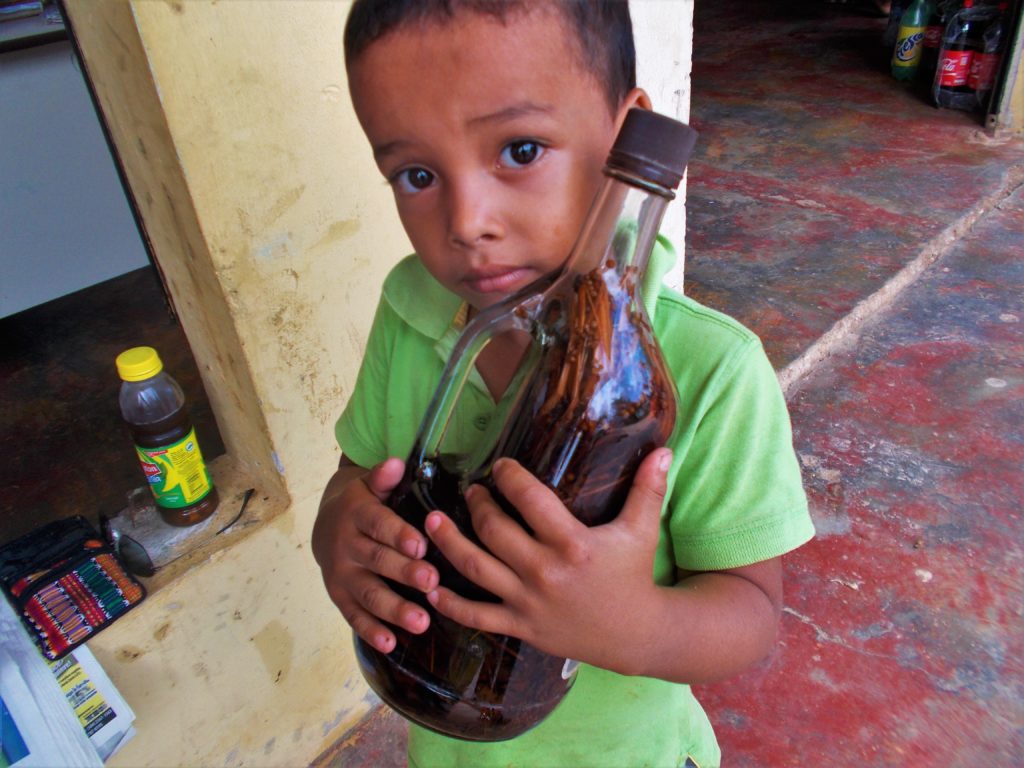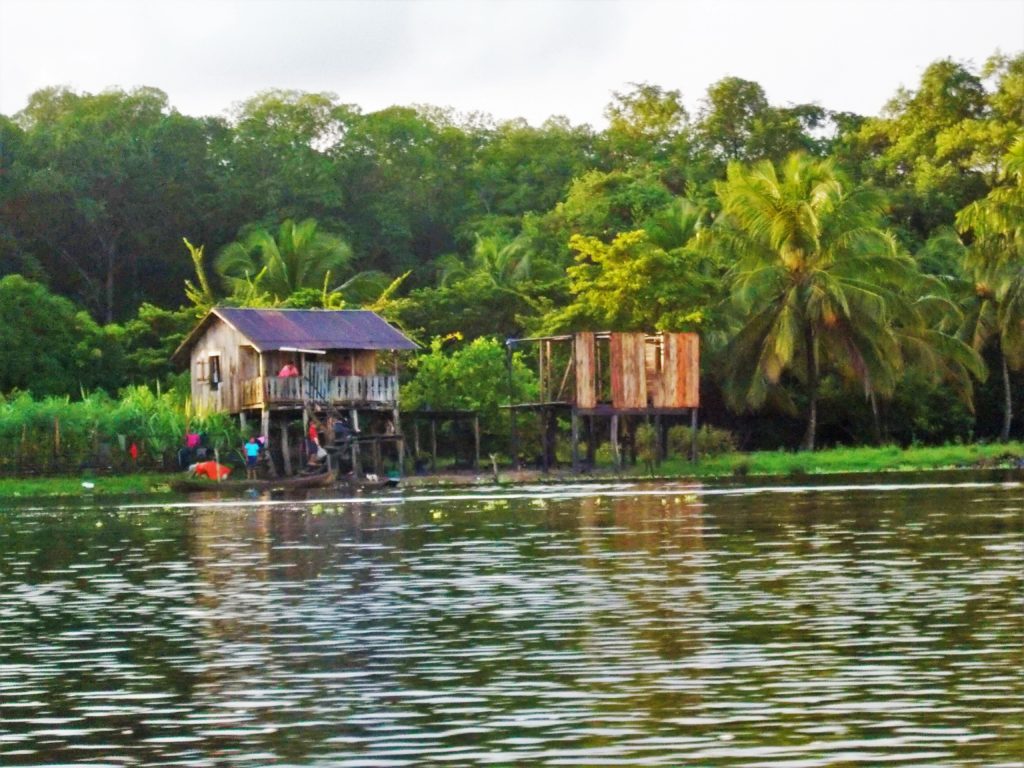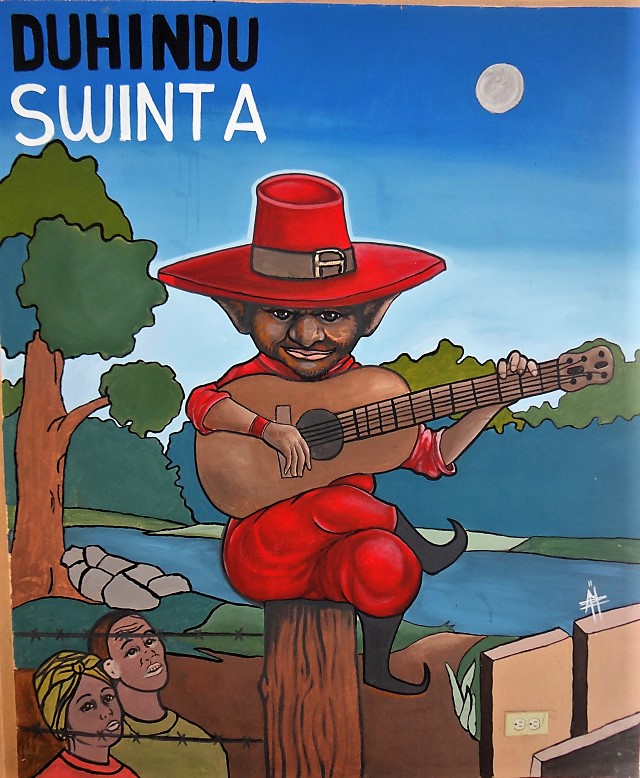As outbreaks of “crazy sickness” continue to afflict Nicaraguan Miskitu towns and villages, we revisit the story of the Goblins -Duendes- of the Wild, or Duhindu of Kambla, or how the community overcame their first case of this “culture-bound syndrome,” blamed on the dark supernatural forces out of the wild bush.


The Duhindu (Wild Goblins) of Kambla
A Miskitu story, translated from Legends and Stories of Nicaragua, and edited by Jack Eidt
Many years ago, before Kambla became a populated town near the Nicaraguan Miskitu capital of Bilwi (Puerto Cabezas) on the Atlantic Coast, people still did not know anything about medicinal plants. There were no healers and sukias (traditional bush doctors) at that time, but many duhindu (duendes in Spanish, or goblins or some call it the ‘dwarf”) lived there. They lived in the bush, away from people’s houses. Only at night they went out making noise and whistling to call people.
When there was enough of a moon, they could be spotted among the trees looking like little men or dwarfs. Once in a while they would grab a horse to ride it. They would not let it rest for a minute and the next day they would find the poor horse ridden to death.
One day a young man disappeared from the community. His mother searched everywhere but could not find him. She lamented, going door-to-door in the village asking everyone if they had seen him, but nobody knew anything about the young man.


After 15 days the young man miraculously appeared again, but had changed a lot. He was thin and pale, he did not want to eat or talk. He was sick, and this resembled what is known today in Miskitu villages as grisi siknis (in the Miskitu or Miskito language, from the English, means “crazy sickness”). It is a contagious, so-called “culture-bound syndrome,” a name foreign academics use to explain phenomena not well understood by Western science. One might consider the plethora of mental illness that exists in the world and what might be the actual contributors that transcend culture. Today grisi siknis generally happens along the Coast of the Miskitus to young women but some men too, including mass outbreaks in Bilwi, Krin Krin, and Bonanza. Individual cases happen all over, however, and are attributed to evil spirits or sorcerers, or maybe duhindu.
Traditional healers or bush doctors did not exist in those times, so they did not know what remedy to give the young man to cure him and restore what they perceived as his stolen soul or spirit. With time they realized that the duhindu had something to do with that matter.
A goblin arrived one night, as the young man suffered from headaches and dizziness, and he fell into a trance and was speaking in an unknown language. His eyes turned red and a giant bulge in his abdomen kept churning. He vomited a live spider. Only he could see the spirit and would later recall a small black man, who had only four fingers, riding a red horse, who tried to lure him away from the village. The goblin whistled and called the young man. With the strength his family managed to keep the youth from leaving the house so that the duhindu could not take him back.
STORY: Miskitu Legend: The Mangoes of the Dead


The years passed and the people of the communities learned to use the power of the plants, to heal the sick and to make remedies. One particular bush healer or sukia arrived in Kambla with a counter protocol that came to her in a dream. She brewed a stew of medicinal plants collected locally and other undisclosed items, which the afflicted youth had to wash in, drink, and inhale the fumes of for ten days. He further was ordered to avoid eating certain meats, or exposure to dead people and pregnant women. Thus they managed to liberate the youth from the power of the duhindu.
With the support of the healer and with rituals they cleaned up the whole community of Kambla and spread the concoction in a ring around the community. Afterwards, all the goblins left that place. Nowadays there are almost no goblins in Kambla. Only in a small creek that remains behind the community are sometimes heard whistles of a duhindu still walking around.
Told by Florencia Hernández (Kambia, 26/6/1997), and compiled by Christián Schnar, edited by Jack Eidt
Read More Nicaraguan Stories in Spanish: http://www.manfut.org/leyendas/mayagnas.html
Updated 12 June 2019










Thank you for sharing this story. I am originally from NIcaragua, but had not read this story in many many years.
Pingback: Behold the Kraken, Destroyer from the Depths of the Sea
Pingback: Honduras: Patuca River Dams Threaten Indigenous Survival
Pingback: Miskitu Coast of Honduras: Village Life in Tide-Flooded Kruta